Nacos
Nacos(官方网站:Nacos.io)是一个易于使用的平台,用于动态服务发现、配置和服务管理。它帮助您轻松构建云原生应用程序和微服务平台。
Nacos支持几乎所有类型的服务。例如,Dubbo/gRPC service, Spring Cloud RESTFul service or Kubernetes service.
Nacos 的关键特性包括:
- 服务发现和服务健康监测
- 动态配置服务
- 动态 DNS 服务
- 服务及其元数据管理
相关网址:
https://github.com/alibaba/spring-cloud-alibaba/wiki
Nacos安装(win环境下)
下载地址:https://github.com/alibaba/nacos/releases
根据自己的spring cloud alibaba版本选择合适的nacos版本下载,我这里云服务是个轻量级的,下载的是zip的,准备安装在win上使用。下载完成解压即用。
不过在使用之前是需要修改一些配置的。Nacos默认是集群安装,我这边自己本地电脑自己使用,就使用的是单机安装。
修改前:
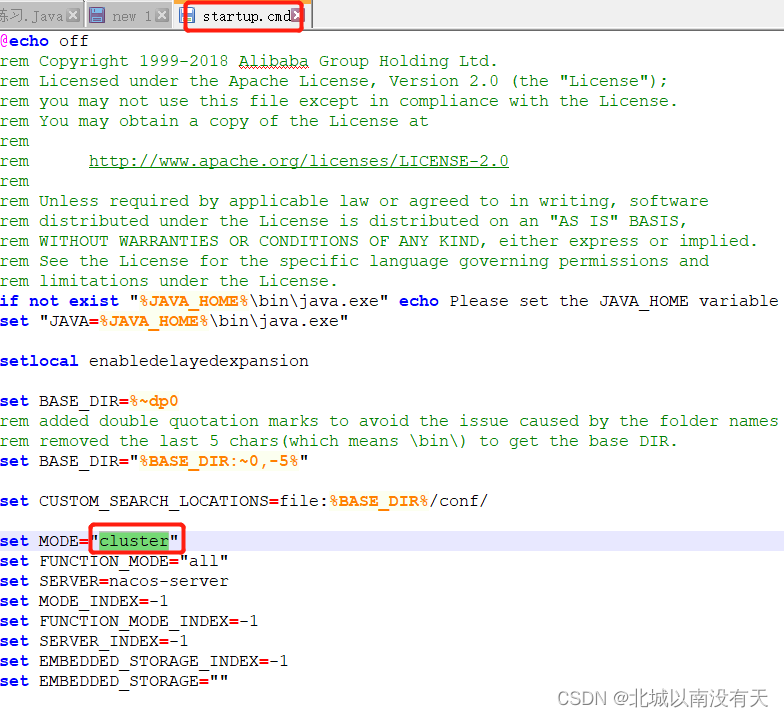
修改后:
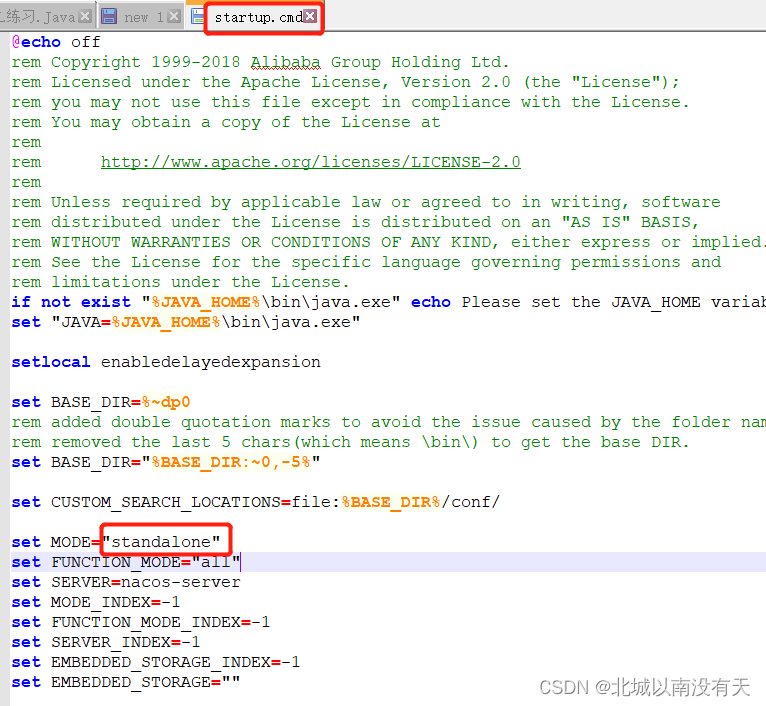
启动Nacos服务
双击修改过的startup.cmd文件即可。

启动完成后效果
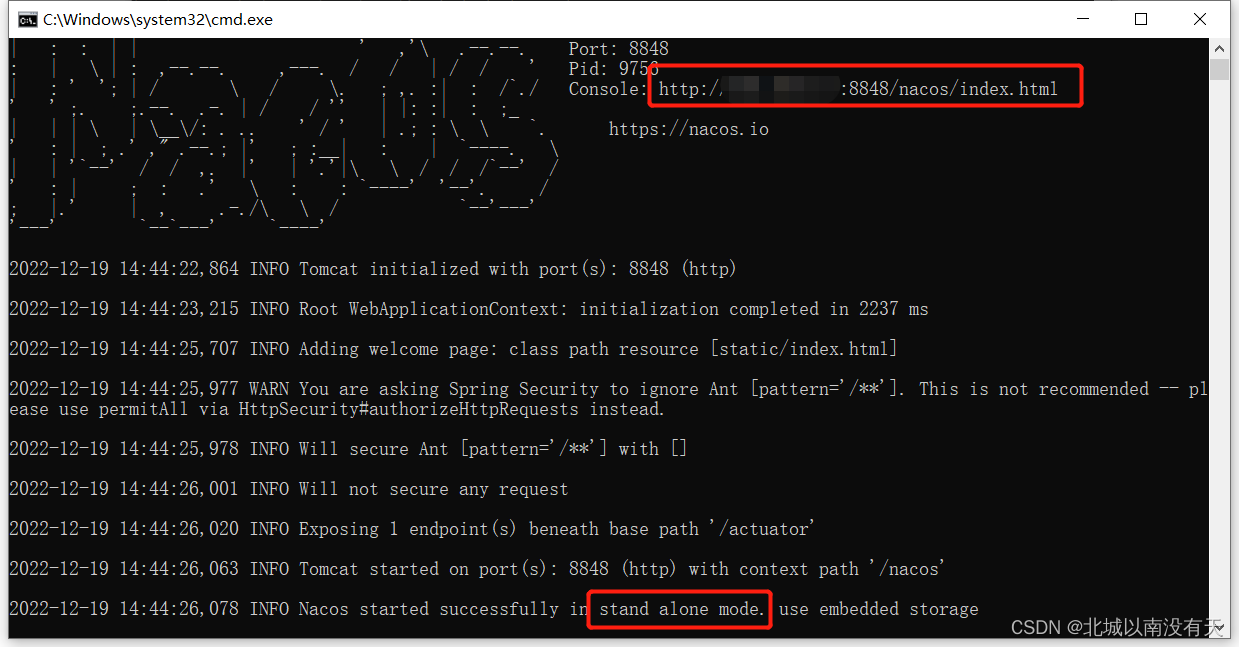
这种模式是属于将数据放在内存中,没有放在数据库中。如果是放在数据库中则需要修改conf/application.properties配置文件,将数据库注释打开。并写入数据库IP和端口
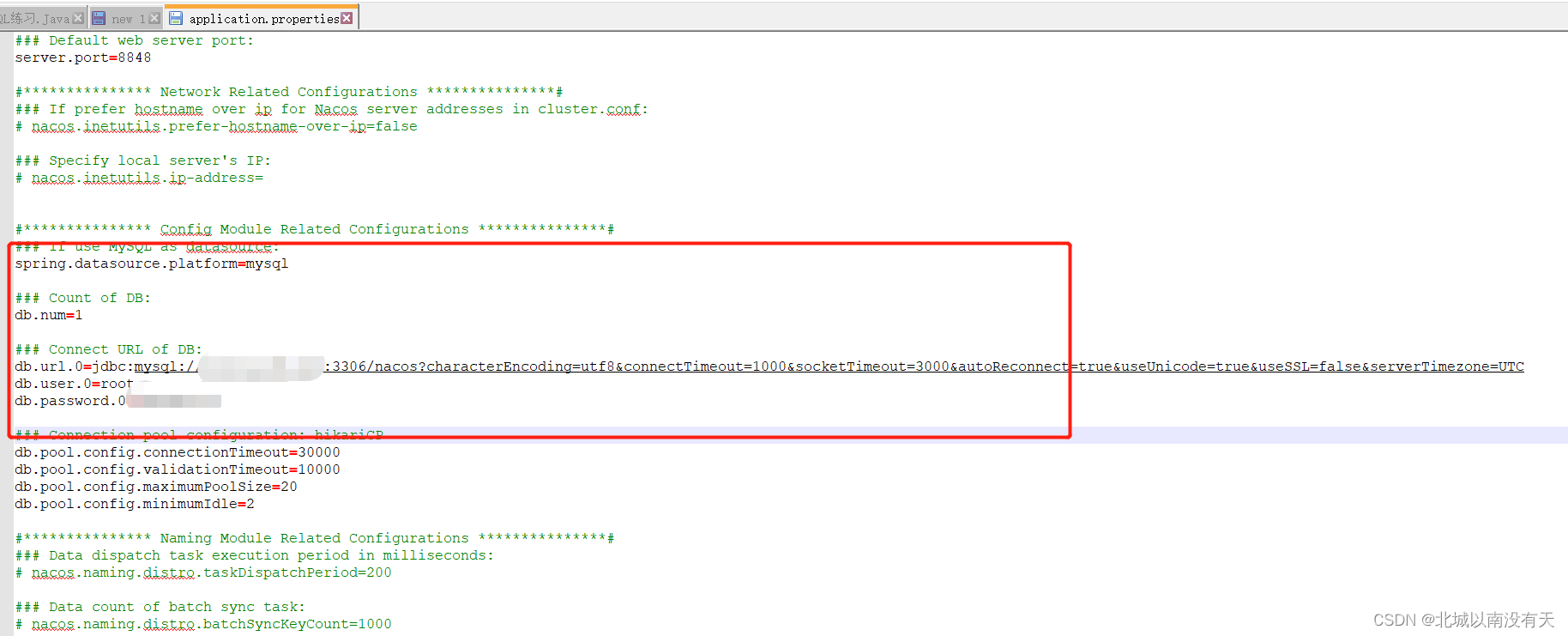
登录Nacos
http://IP:8848/nacos/index.html
访问启动后的控制台地址登录Nacos
默认登录名密码:nacos/nacos

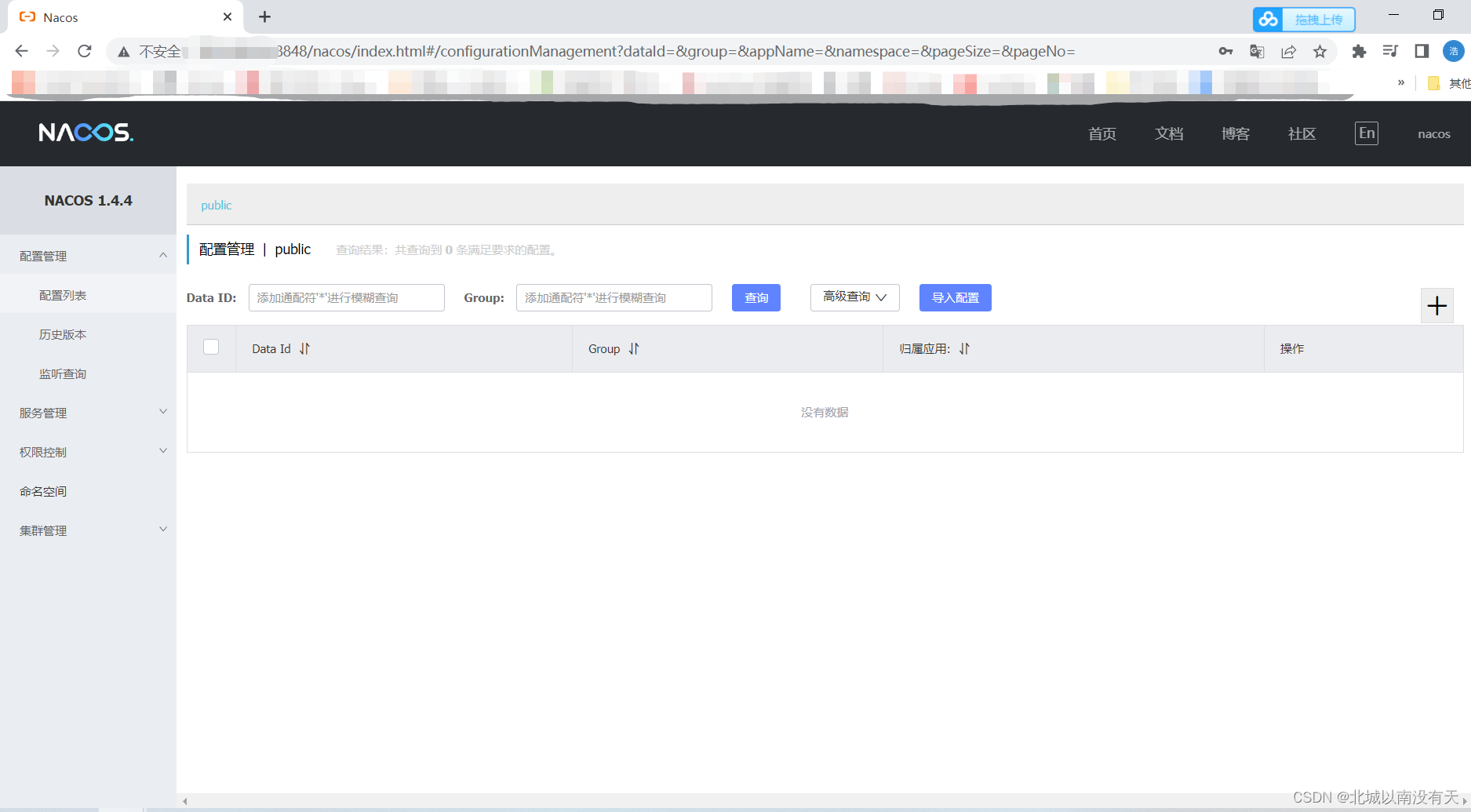
Nacos 注册中心
-
添加依赖
<dependency> <groupId>com.alibaba.cloud</groupId> <artifactId>spring-cloud-starter-alibaba-nacos-discovery</artifactId> </dependency> -
添加配置文件
server: port: 8033 # 应用名称 (nacos会将该名称当做服务名称) spring: application: name: product-service cloud: nacos: server-addr: 192.168.2.6:8848 # nacos地址 discovery: username: nacos password: nacos namespace: public -
添加注解
@SpringBootApplication @EnableDiscoveryClient @EnableFeignClients public class productApplication { public static void main(String[] args) { SpringApplication.run(productApplication.class,args); } }
Nacos config 配置中心
开启nacos权限需配置
conf/application.properties配置文件,将nacos.core.auth.caching.enabled变更为true

-
创建用户
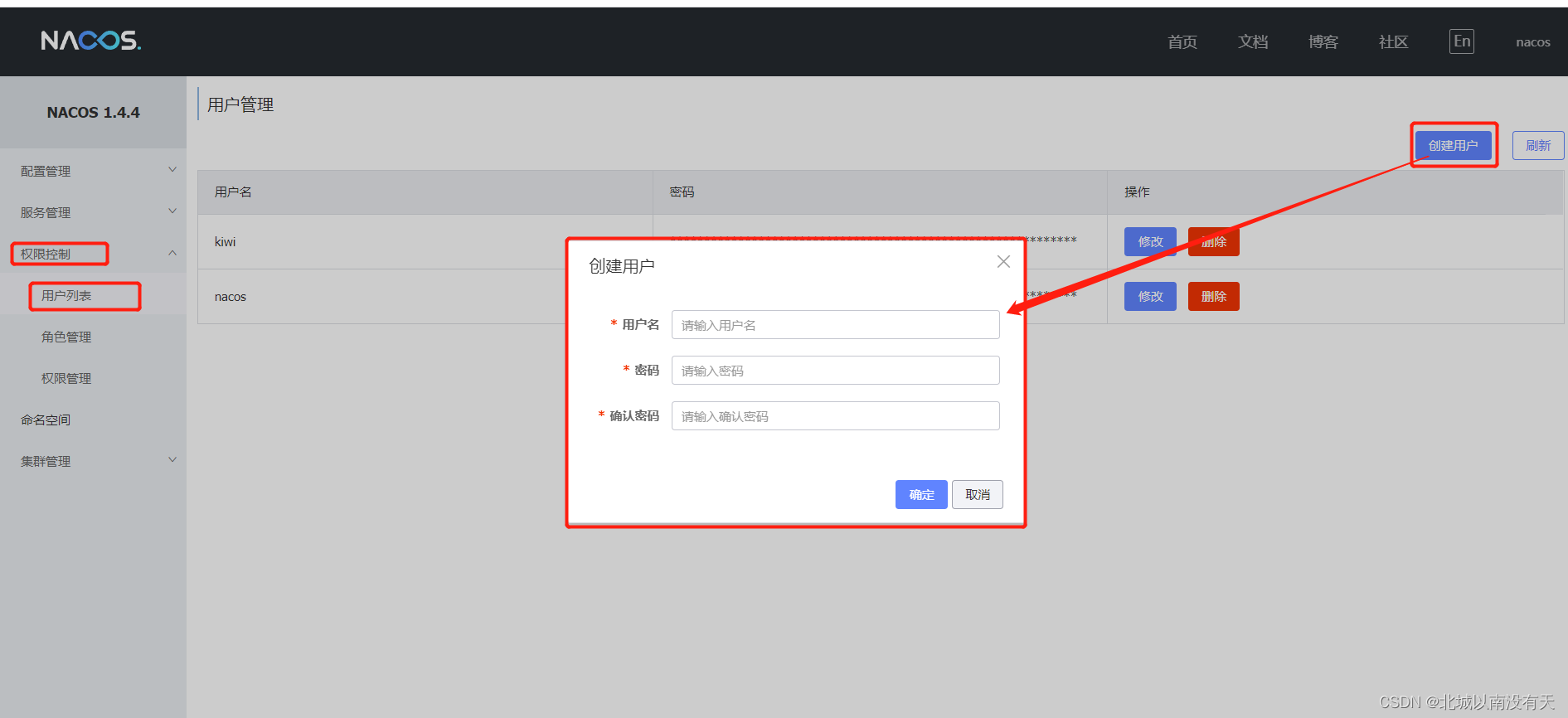
-
创建名称空间
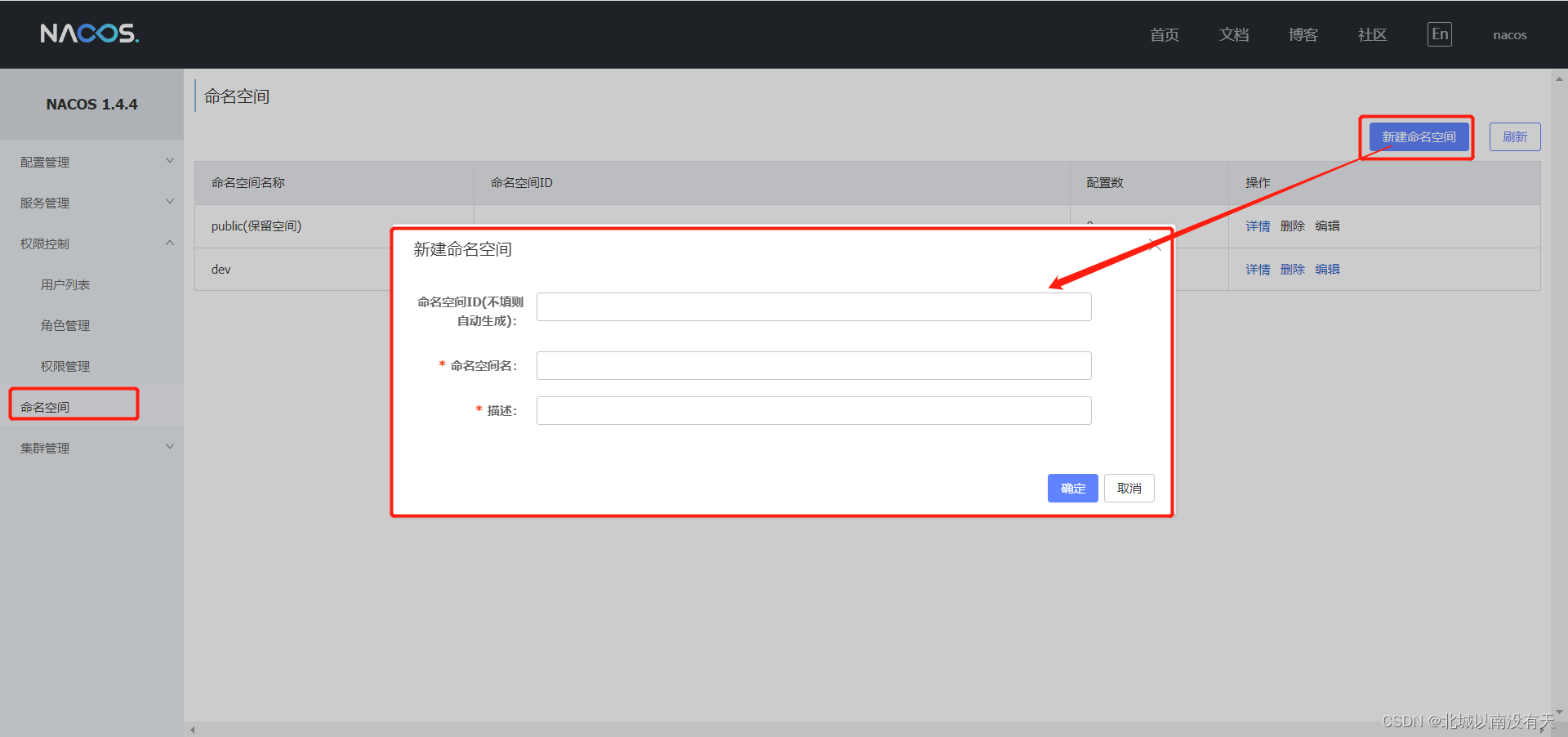
-
绑定权限

-
创建配置(Data ID命名时带上后缀)
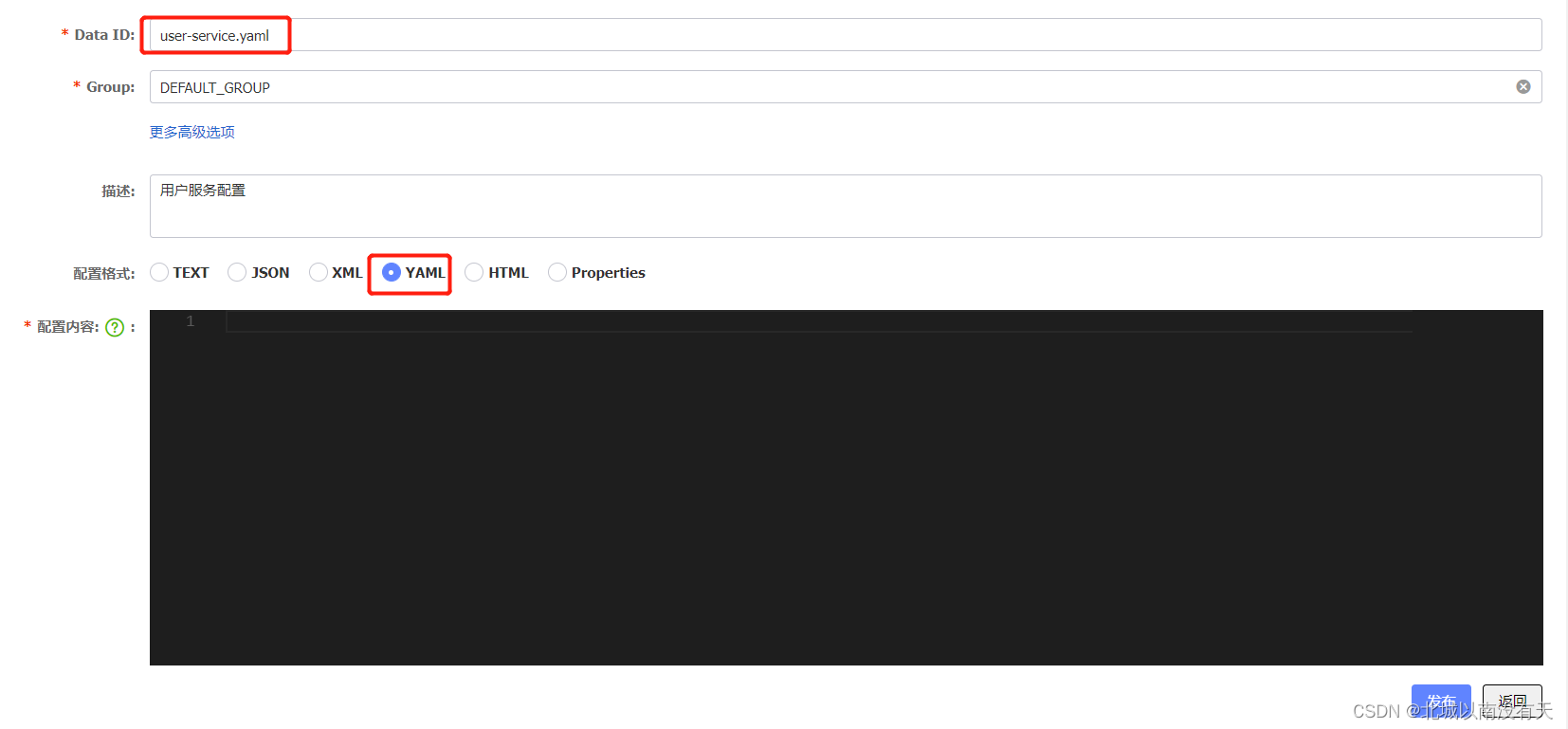
-
添加配置
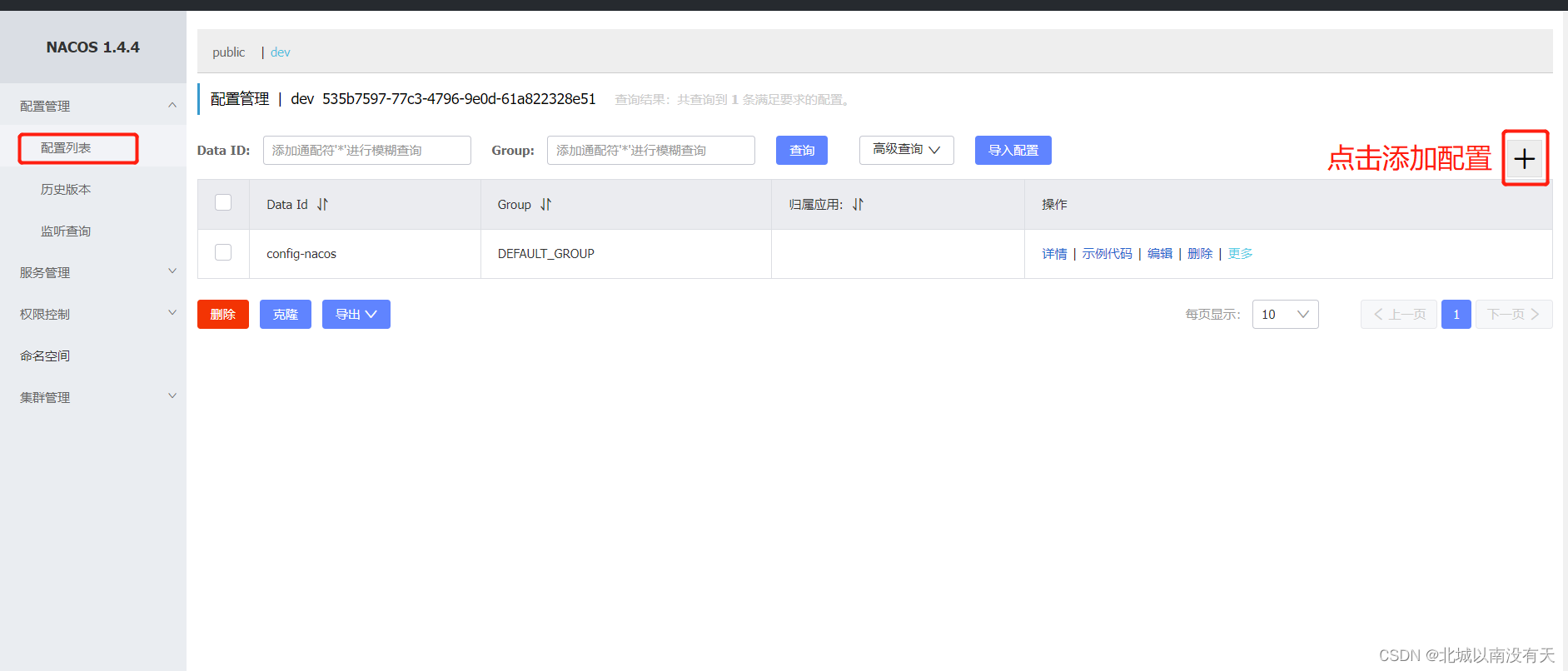
-
导入依赖
<dependency> <groupId>com.alibaba.cloud</groupId> <artifactId>spring-cloud-starter-alibaba-nacos-config</artifactId> </dependency> -
编写bootstrap.yml配置文件(nacos配置中心的配置信息要写在bootstrap.yml中)
server: port: 8044 spring: application: # 服务名 # 会根据服务名拉取对应的Data ID。如果Data ID和服务名不一致可以手动来指定Data ID name: config-nacos cloud: nacos: #nacos地址,用户名密码 server-addr: 192.168.2.6:8848 username: nacos password: nacos config: # 名称空间 namespace: 535b7597-77c3-4796-9e0d-61a822328e51 # 指定配置中心的文件类型,默认是properties类型 file-extension: yaml -
读取nacos中的配置
@SpringBootApplication public class ConfigApplication { public static void main(String[] args) throws InterruptedException { ConfigurableApplicationContext applicationContext = SpringApplication.run(ConfigApplication.class, args); while (true){ //读取配置中心配置 String name = applicationContext.getEnvironment().getProperty("user.username"); String age = applicationContext.getEnvironment().getProperty("user.age"); System.out.println("name:" + name + ",age:" + age); TimeUnit.SECONDS.sleep(1); } } }
Namespace,Group,Data ID最佳实践
- namespace:区分不同的环境,如开发环境,测试环境,预发环境,生产环境
- Group:区分不同的项目,如某某医疗项目,某某电商项目
- Data Id:区分项目下不同的工程(微服务),每个Data ID是一个工程的主配置文件

自定义扩展的Data ID
配置文件的优先级(优先级大的会覆盖优先级小的,并且会形成互补)
profile>默认配置文件(和服务名相同的配置文件)>extension-configs(下标越大优先级越高)>shared-configs(下标越大优先级越高)
server:
port: 8044
spring:
application:
name: config-nacos
cloud:
nacos:
server-addr: 192.168.2.6:8848
username: nacos
password: nacos
config:
namespace: 535b7597-77c3-4796-9e0d-61a822328e51
file-extension: yaml
shared-configs: # 用- 表示数组的第一个,也可以使用[0]表示。 同一个shared下,下标越大优先级越大
- data-id: common.yaml
refresh: true
extension-configs[0]:
data-id: common-ex.yaml
refresh: true
@RefreshScope
@Value注解可以获取到配置中心的值,但是无法动态感知修改后的值,需要利用@RefreshScope注解。
@Setter
@Getter
@ConfigurationProperties(prefix = "kiwi.security")
@RefreshScope
public class SecurityProperties {
private AuthProperties auth = new AuthProperties();
private PermitProperties ignore = new PermitProperties();
private ValidateCodeProperties code = new ValidateCodeProperties();
}
kiwi:
security:
ignore:
# 忽略认证的地址
httpUrls: >
/api-uaa/oauth/**,
/api-uaa/validata/**,
/api-uaa/css/**,
/api-uaa/images/**,
/api-uaa/js/**,
/login.html,
/user/login,
/api-uaa/tokens/key
auth:
urlPermission:
#是否开启url级别权限
enable: false
#配置只进行登录认证,不进行url权限认证的api
ignoreUrls: >
/api-user/menus/current,
/api-user/users/current,
/api-log/requestStat
#白名单
includeClientIds:
- webApp
renew:
#是否开启token自动续签(目前只有redis实现)
enable: true
#白名单
includeClientIds:
- webApp
SecurityProperties里面的属性是可以有多个,嵌套多层或者使用List,数组来接收的。以Auth配置为例,配置文件中的配置和配置类中的属性是能对上的。
@Setter
@Getter
public class AuthProperties {
/**
* 配置要认证的url(默认不需要配置)
*
* 优先级大于忽略认证配置`kiwi.security.ignore.httpUrls`
* 意思是如果同一个url同时配置了`忽略认证`和`需要认证`,则该url还是会被认证
*/
private String[] httpUrls = {
};
/**
* token自动续签配置(目前只有redis实现)
*/
private RenewProperties renew = new RenewProperties();
/**
* url权限配置
*/
private UrlPermissionProperties urlPermission = new UrlPermissionProperties();
/**
* 是否开启统一登出
* 1. 登出时把同一个用户名下的所有token都注销
* 2. 登出信息通知所有单点登录系统
*/
private Boolean unifiedLogout = false;
/**
* 是否同应用同账号登录互踢
*/
private Boolean isSingleLogin = false;
/**
* 是否同应用同账号登录时共用token
* true: 多个用户使用同一账号登录时共用一个token
* false: 就算使用同一账号登录时都会新建一个token
*/
private Boolean isShareToken = true;
}
@Setter
@Getter
public class UrlPermissionProperties {
/**
* 是否开启url级别权限
*/
private Boolean enable = false;
/**
* 白名单,配置需要url权限认证的应用id(与黑名单互斥,只能配置其中一个),不配置默认所有应用都生效
* 配置enable为true时才生效
*/
private List<String> includeClientIds = new ArrayList<>();
/**
* 黑名单,配置不需要url权限认证的应用id(与白名单互斥,只能配置其中一个)
* 配置enable为true时才生效
*/
private List<String> exclusiveClientIds = new ArrayList<>();
/**
* 配置只进行登录认证,不进行url权限认证的api
* 所有已登录的人都能访问的api
*/
private String[] ignoreUrls = {
};
}
List<String> includeClientIds = new ArrayList<>();
/**
* 黑名单,配置不需要url权限认证的应用id(与白名单互斥,只能配置其中一个)
* 配置enable为true时才生效
*/
private List<String> exclusiveClientIds = new ArrayList<>();
/**
* 配置只进行登录认证,不进行url权限认证的api
* 所有已登录的人都能访问的api
*/
private String[] ignoreUrls = {
};
}